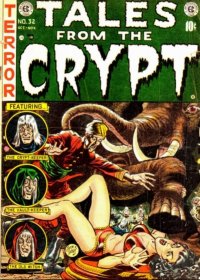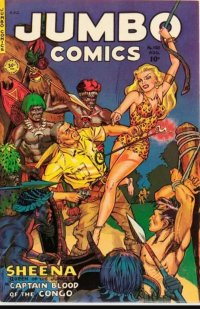Spandex
A crazy bulbous punchbag of sound
So I found this website - Comic Books Plus - with thousands of out of copywrite Golden Age Comics. Some are great, some are terrible, loads are formulaic, many are offensive in some way, but delving into them has been an education. Obviously the big names - DC Comics, EC Comics, the early superheros like Captain America that are now owned by Marvel - are absent, but that leaves the ocean of lesser known Comics that poured out of numerous publishers throughout the Golden Age.
A definition of what I mean by the Golden Age of Comics...
The idea of sequential illustrated narratives goes back a long way and you can pick your favourite 'first comic ever': the Bayeux Tapestry, Rodolphe Topffer's 1837 The Adventures of Mr. Obadiah Oldbuck, Chinese Lianhuanhua from the late 19thC, Richard Fenton Outcault's 1896 The Yellow Kid. But most people put the start of the Golden Age of Comics as June 1938 with the publication of Action Comics #1:

The introduction of Superman caught the public's imagination with tales of a superpowered hero fighting on the side of the little guys and an explosion of comic books followed, the biggest names selling in their millions to mainly young (up to mid-20s) people. While superhero comics are what many people think of there was a wide range of genres throughout the Golden Age - romance, adventure, sci-fi, crime, horror. These were where most of the interesting stories were.
The biggest selling comic was Fawcett Comic's Captain Marvel, who outsold Superman throughout the 1940s:

An obvious Superman rip-off, with his cry of Shazam! he turned from homeless orphan boy Billy Baston into superhero Captain Marvel. His reign came to an end in 1953, partly as a result of a copywrite lawsuit by DC Comics and partly because of the declining popularity of superheros after 1945ish. Fawcett Comic's licenced the character to DC in 1971 and since then he has been a minor character in the DC universe.
The Golden Age of Comics came to an end around 1954, following the publication of Fredric Wertham's Seduction of the Innocent in April 1954. This book tapped into pre-existing fears about the content of comic books and triggered a moral panic blaming comics for juvenile deliquency, which lead to the creation of the Comics Book Code in the same year. This forced comic publishers to release only tamer content suitable for the youngest kids. Loads of publishers folded and the comics industry struggled for a few years before the resurgence of superheros and the start of the Silver Age of comics.
A definition of what I mean by the Golden Age of Comics...
The idea of sequential illustrated narratives goes back a long way and you can pick your favourite 'first comic ever': the Bayeux Tapestry, Rodolphe Topffer's 1837 The Adventures of Mr. Obadiah Oldbuck, Chinese Lianhuanhua from the late 19thC, Richard Fenton Outcault's 1896 The Yellow Kid. But most people put the start of the Golden Age of Comics as June 1938 with the publication of Action Comics #1:

The introduction of Superman caught the public's imagination with tales of a superpowered hero fighting on the side of the little guys and an explosion of comic books followed, the biggest names selling in their millions to mainly young (up to mid-20s) people. While superhero comics are what many people think of there was a wide range of genres throughout the Golden Age - romance, adventure, sci-fi, crime, horror. These were where most of the interesting stories were.
The biggest selling comic was Fawcett Comic's Captain Marvel, who outsold Superman throughout the 1940s:

An obvious Superman rip-off, with his cry of Shazam! he turned from homeless orphan boy Billy Baston into superhero Captain Marvel. His reign came to an end in 1953, partly as a result of a copywrite lawsuit by DC Comics and partly because of the declining popularity of superheros after 1945ish. Fawcett Comic's licenced the character to DC in 1971 and since then he has been a minor character in the DC universe.
The Golden Age of Comics came to an end around 1954, following the publication of Fredric Wertham's Seduction of the Innocent in April 1954. This book tapped into pre-existing fears about the content of comic books and triggered a moral panic blaming comics for juvenile deliquency, which lead to the creation of the Comics Book Code in the same year. This forced comic publishers to release only tamer content suitable for the youngest kids. Loads of publishers folded and the comics industry struggled for a few years before the resurgence of superheros and the start of the Silver Age of comics.


















































